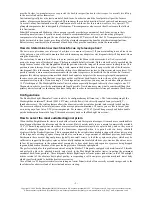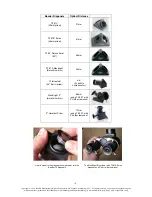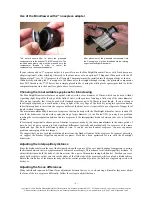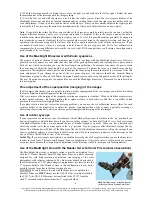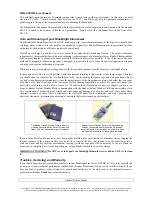
- 1 -
Copyright © 2006, Baader Planetarium GmbH, Unitron Italia Srl, Alpine Astronomical LLC. All rights reserved. Copying or use without express
written consent is prohibited. (Worldwide @ www.baader-planetarium.de),(Italy @ www.unitronitalia.it),(USA @ www.alpineastro.com)
1
2
3
5
6
4
BAADER MAXBRIGHT
®
BINOCULAR VIEWER
INSTRUCTION MANUAL
Congratulations on your purchase of the Baader MaxBright Binocular Viewer. This is a very sophisticated optical
accessory that, if used in the right way, will offer you amazing views for all your life. To obtain the maximum
performance from the viewer, we suggest you spend a little time reading this instruction manual before starting to use it.
Parts List and Name
1
Eyepiece Locking and Fine Collimation Screws
2
Eyepiece Holder 1.25" (31.8mm)
3 Rubber
Grip
4
Rotating Threaded Ring and front Optical Window
(not visible)
5
Glasspath Corrector (back focus compensator)
6
T2/1.25" (31.8 mm) Barrel/Nosepiece (or T2/2”
(50.8mm) Barrel/Nosepiece)
Setup
y
Remove the two plastic caps from the eyepiece holders and
unscrew the black cap from the optical window of the
viewer.
y
Screw the six (6) screws provided into the holes of the
eyepieces holders.
y
Screw the Glasspath Corrector inside the 1.25" (31.8mm)
barrel (see page 5 for instructions on using a 2” nosepiece).
y
Screw the T2/31.8 barrel onto the front of the viewer,
turning the locking ring until tight.
y
Insert the Binocular Viewer in the telescope's eyepiece holder and tighten the set screw(s) to hold the binoviewer in
place.
Optical distance, Back-Focus and Glasspath
compensator
To pass through the binoviewer and reach the eyepieces, the cone of
light coming from the telescope covers a path of about 100-110 mm.
Therefore the telescope must have a back focus (the travel of the light
outside the focuser) of at least 110mm in order to be able to reach
focus when used with the binocular viewer. So, several factors must
be considered:
1)
The majority of the Newtonians present a very short back focus,
usually no more than 30-60 mm; as a result, a typical Newton
telescope doesn't allow the use of a binoviewer without the use of
a back focus compensator.



